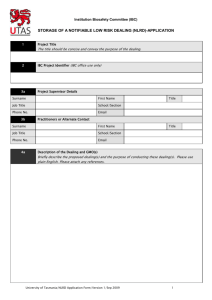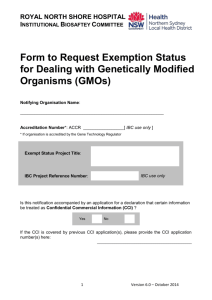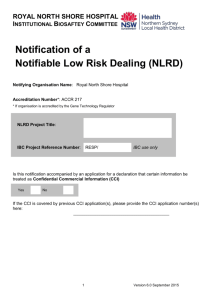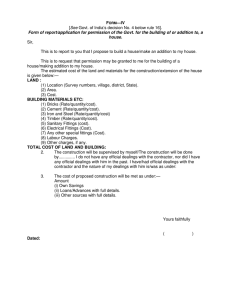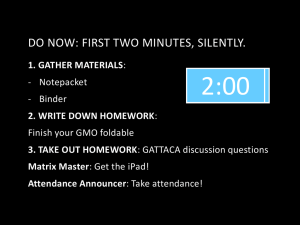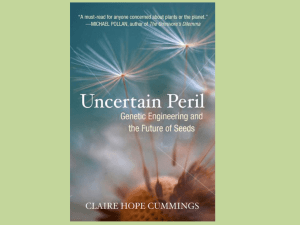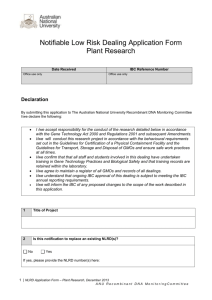BSC 5 Word
advertisement
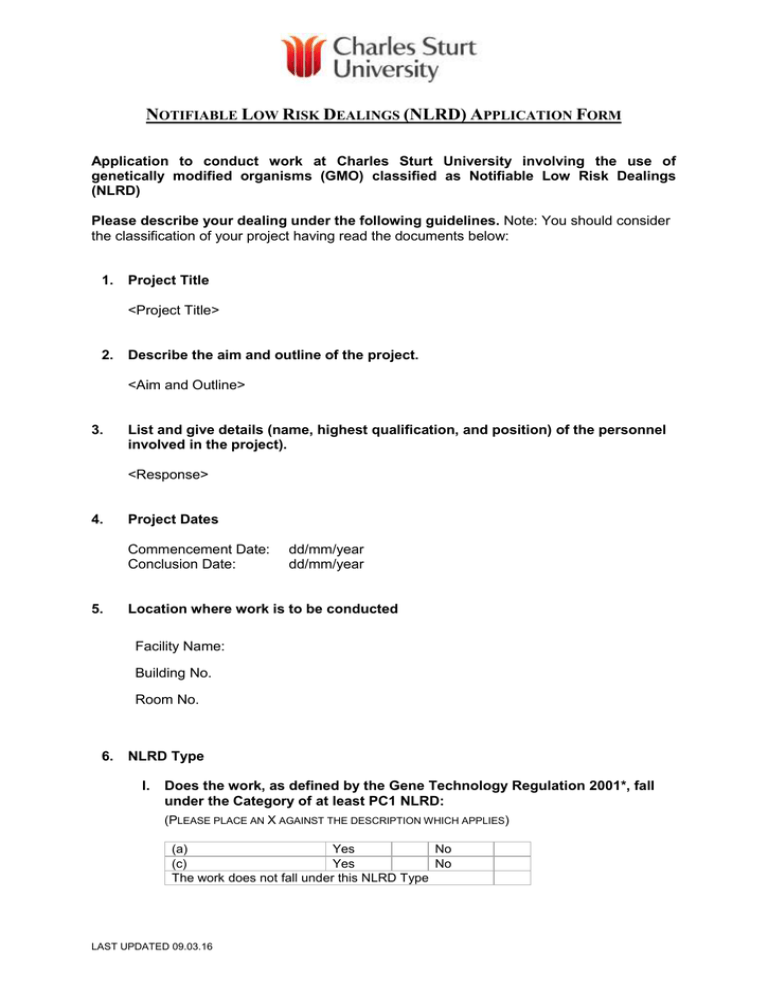
NOTIFIABLE LOW RISK DEALINGS (NLRD) APPLICATION FORM Application to conduct work at Charles Sturt University involving the use of genetically modified organisms (GMO) classified as Notifiable Low Risk Dealings (NLRD) Please describe your dealing under the following guidelines. Note: You should consider the classification of your project having read the documents below: 1. Project Title <Project Title> 2. Describe the aim and outline of the project. <Aim and Outline> 3. List and give details (name, highest qualification, and position) of the personnel involved in the project). <Response> 4. Project Dates Commencement Date: Conclusion Date: 5. dd/mm/year dd/mm/year Location where work is to be conducted Facility Name: Building No. Room No. 6. NLRD Type I. Does the work, as defined by the Gene Technology Regulation 2001*, fall under the Category of at least PC1 NLRD: (PLEASE PLACE AN X AGAINST THE DESCRIPTION WHICH APPLIES) (a) Yes No (c) Yes No The work does not fall under this NLRD Type LAST UPDATED 09.03.16 II. Does the work, as defined by the Gene Technology Regulation 2001*, fall under the Category of at least PC2 NLRD: (PLEASE PLACE AN X AGAINST THE DESCRIPTION WHICH APPLIES) (a) Yes (aa) Yes (b) Yes (c) Yes (d) Yes (e) Yes (f) Yes (g) Yes (h) Yes (i) Yes (j) Yes (k) Yes (l) Yes (m) Yes The work does not fall under this NLRD Type 7. No No No No No No No No No No No No No No Describe the GMOs you are making or using under the following headings: GMO Description Summary Genus Species (where known) Family (for viruses) If the above is not known, please give a summary description of the GMO as best you can I. Hosts/ vector systems Describe the host /vector systems you will be using in detail. Please include maps and sources of all vectors and cells. Also include how the donor DNA will be introduced into the vector. <Response> II. Donor DNA Describe the sources and characteristics of the donor DNA in detail and what manipulations will be used in recombination with the vector. e.g. organism- is it a pathogen and of what, what genes, how produced- PCR, genomic or cDNA. <Response> III. What traits will be modified by transfer of DNA to the hosts. <Response> 8. The risk assessment and risk management In your assessment please define any risks to humans, animals or the environment. What might be the worst case scenario and how likely is it? Please consider if this is likely to increase the pathogenicity of any host or result in creation or release of any pathogenic/ recombinant organisms either by the GMO itself or recombination processes that might occur in the host. Describe what will manage the risks. Please also note that a risk assessment should be done on any laboratory work in the Faculty of Science involving GMO or not. LAST UPDATED 09.03.16 <Response> WHAT DEALINGS WITH GMOS ARE CLASSIFIED AS EXEMPT DEALINGS: http://www.ogtr.gov.au/internet/ogtr/publishing.nsf/Content/exemptdealings-1Sept2011-htm *TYPES OF DEALINGS WITH GMOS CLASSIFIED AS NOTIFIABLE LOW RISK DEALINGS NLRDS): http://www.ogtr.gov.au/internet/ogtr/publishing.nsf/Content/nlrdsSept2011-excerpt-htm LAST UPDATED 09.03.16
